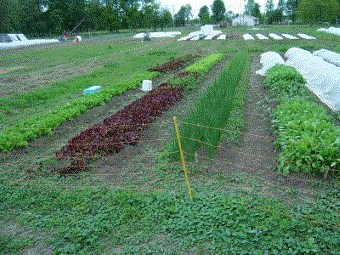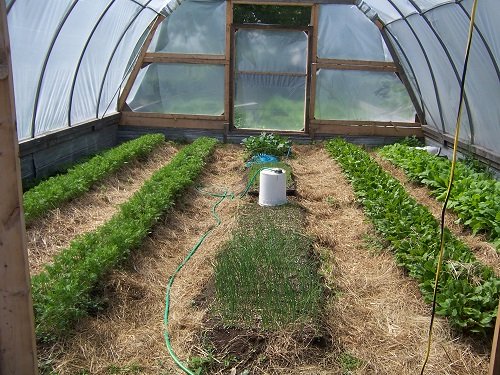Market farming – a primer for the beginner
I believe market farming is the best job there; I get a real sense of satisfaction from producing great food for appreciative customers.
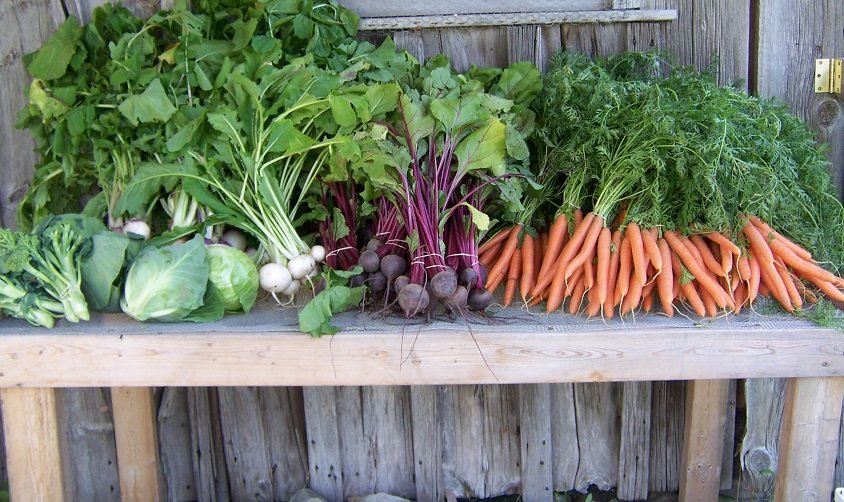 Garden goodies picked and ready to be packed for delivery
Garden goodies picked and ready to be packed for deliveryIf you are thinking about market farming as a career, here's a few points to consider before you take the leap. I've also included some of my personal answers to the questions, to give you a guide.
Selling your produce.
Before you grow anything, think about how you will sell it first. Are you close to a population centre that will provide a market for your farm goodies? Is there an established farmer's market close by?
Can you create a Community Supported Agriculture (CSA) veggies box delivery program? How will you price your products to make a profit? Did you include the costs of harvesting, processing and transportation in your calculations?
My answers: We operate a CSA, delivering to about 50 families this year. The families are all located withing 25 km of the farm. The advantage of the CSA is we know how many customers we have, and how much we have to grow.
Therefore we can set a price per share to make a profit, using the Cashflow Planning spreadsheet I created. We also sell overflow produce at a farmer's market in a nearby town (less than 10 km away.)
Growing your produce.
Do you have good market farming land, or can you get access to land for a reasonable price? How will you till the land? What crops can you grow profitably in your area, with your growing season? Will season extension (using row covers, greenhouses) be necessary to provide a reasonable season? What about access to water for irrigation, and electricity for tools, fans, pumps, etc?
My answers: Our farm has good Class One farmland; the soil is fertile but a little heavy. We hire a neighbour's tractor for primary tillage, then I use my walk-behind rototiller for finishing the beds. We use raised beds to help in drainage, and drip irrigation for watering. We have a heated plant starting room with grow lights for the earliest seeds we start, and two small greenhouses. We use a half-mile or so of row cover each year as well.
Protecting your produce.
How will you protect your crop from insects, and diseases and wildlife? Will you use passive and preventative means of insect control, and strictly organic controls? Will you need fencing to keep out marauding wildlife (or your own livestock?)
My answers: We use passive means of insect control in the garden and the greenhouses; we use sticky traps, row cover, and if necessary a soap and water spray for the persistent bugs. We try to select disease-resistant varieties of vegetables whenever possible. My whole garden is surrounded by electric mesh fence to keep out the bad guys.
Harvesting your produce.
When and for how long does each crop produce? How long will it keep in the field? What are the processing requirements? Does it need to be cleaned, weighed, counted, packed? What kind of storage is required? Do you need refrigeration? What about transportation to your market, and keeping your goodies fresh there?
My answers: My whole garden is planned out using a Garden Planner spreadsheet I developed. I know when I can expect to harvest each crop, and when I need to replant.
We have a veggies processing area with shade, weigh scales, power and water, located between my two gardens. I built a walk-in cooler to store the veggies until delivery. And my CSA delivery runs are short, because I don't deliver further than 25 km (15 miles) from the farm.
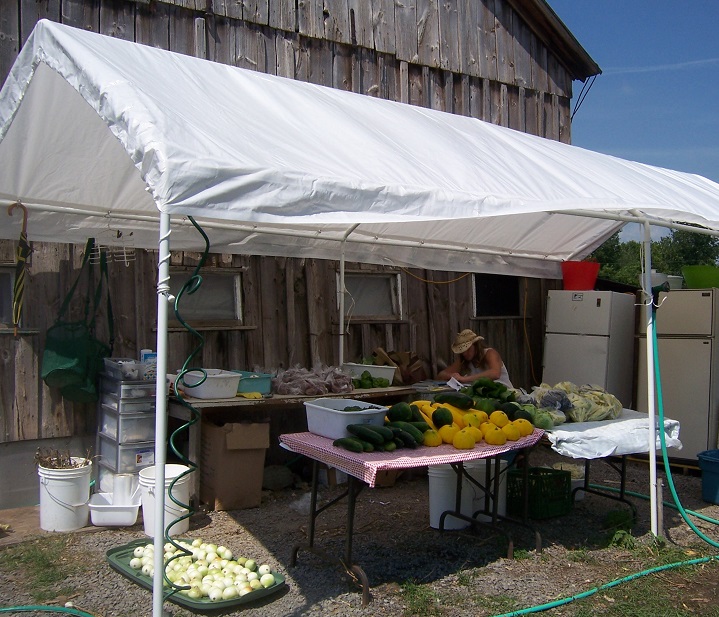 The first veggie processing area we built
The first veggie processing area we builtWhew! This probably sounds like a lot to think about just to grow a few veggies for sale. But here's the reality: market farming is a great business, if you treat it as a business. And to do that means developing your own answers to the questions above.
A fellow grower lost out on $5,000 in her first season because of one simple mistake. Get your FREE Market Garden Starter Guide and avoid this costly error.
Imagine building a profitable and sustainable market garden even on a small property.
Enter your email address and your free report will be sent to you right away.
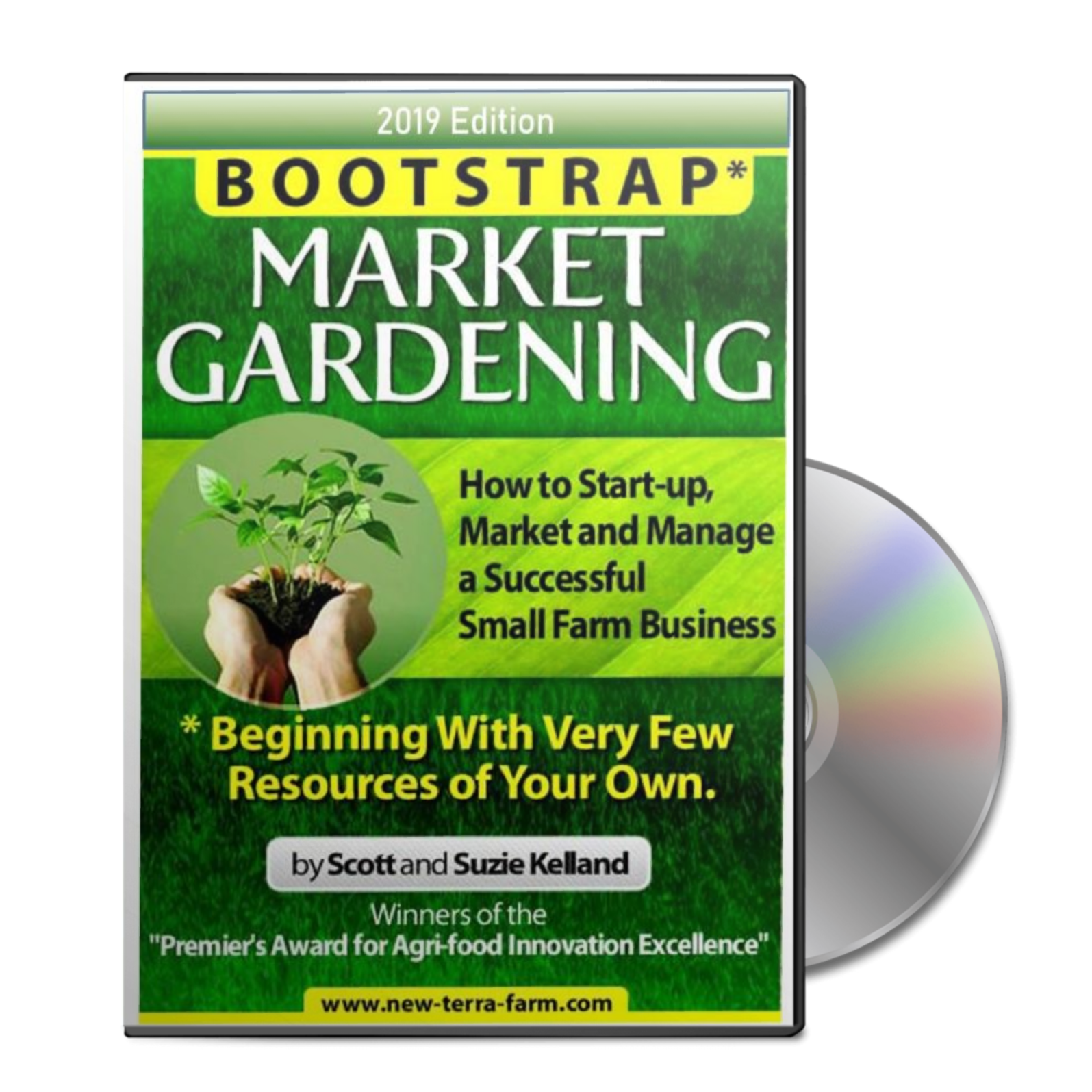 Now includes Garden Planner software
Now includes Garden Planner softwareBootstrap Market Gardening, my first Bootstrap Book, shows you step-by-step how to start-up, market and manage an organic market garden based on CSA principles.
New edition includes my Garden Planner spreadsheet. Get Bootstrap Market Gardening only from New Terra Farm.
Or get Bootstrap Market Gardening as part of my Complete Start Farming Pack and SAVE 60%!
- Home Page ›
- High income Market Garden ›
- Market Farming

